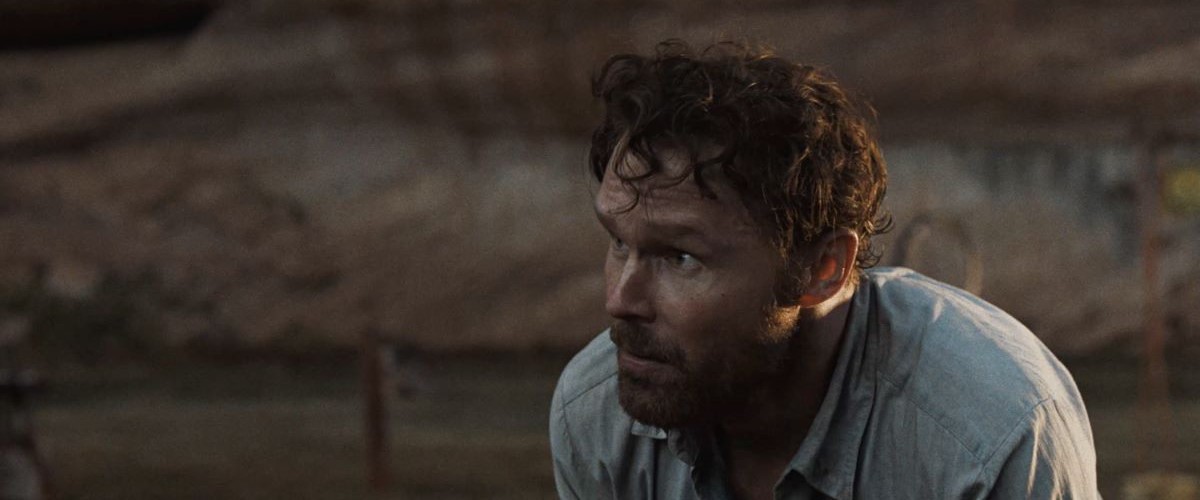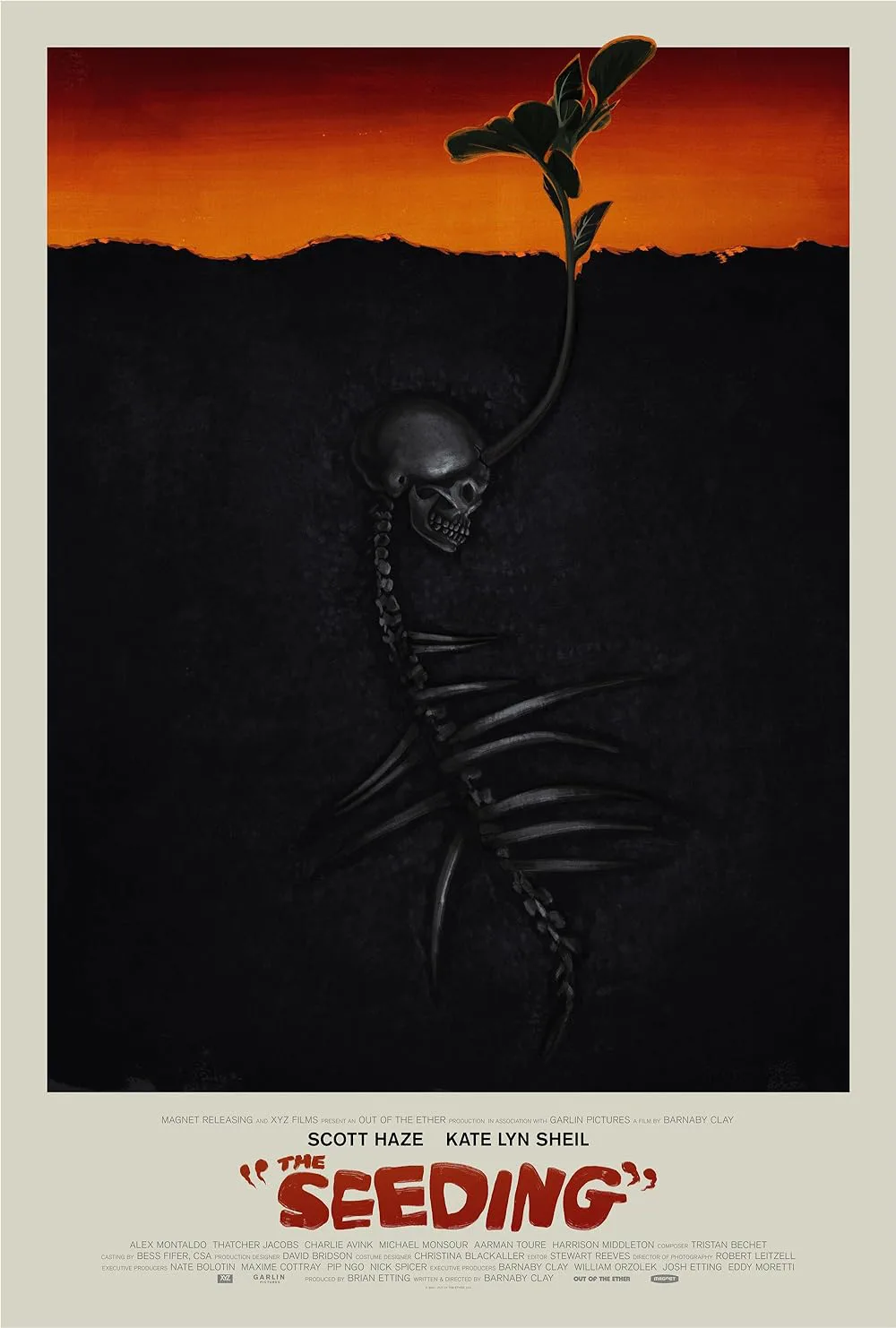“The Seeding,” a bleak horror movie about a hiker who gets trapped in the desert, starts by making you flinch. We see extreme close-ups of a toddler’s bloody face as it chows down on a human finger. The kid snacks on the digit for a moment, then the camera suddenly pulls back to show him stumbling around the desert.
Shot in Utah, “The Seeding” benefits greatly from its evocative location photography, credited to director of photography Robert Leitzell. The movie’s eerie ambience also barely compensates for its creators’ otherwise wispy approximation of psychosexual dread, which is often defined by generic folk horror atavism and a lot of unprocessed misanthropy.
Writer/director Barnaby Clay successfully keeps viewers on our toes, even if a lot of his movie feels like a series of programmatic jabs at our complacence. Clay’s surreal drama isn’t stillborn as much as it’s emotionally uninflected and monotonous. Squirming emotions, about fatherhood and attendant feelings of inadequacy, are frequently produced, but not much is required of viewers, except to wince and repeat.
The boy from the first scene is part of a tribe of grimy and gleefully sadistic children. This group isn’t the main subject of “The Seeding.” More like a crucial plot device and symbolic clothesline. Wayward hiker Wyndham Stone (Scott Haze) follows one of the boys against all genre-savvy common sense. He quickly gets lost and stumbles into a desolate canyon, populated by a single woman, Alina (Kate Lyn Sheil) and inaccessible beyond a retractable ladder and some rope.
Wyndham repeatedly injures himself while attempting to escape; Alina encourages him to be like her and accept his fate. He asks her questions, but she only says so much. The boys sometimes appear over the canyon’s edge; they either curse Wyndham or give him false hope. He gives in to his unyielding partner, and slowly loses his mind in the process.
In his second feature, Clay (“Shot! The Psycho-Spiritual Mantra of Rock”) processes a mess of icky emotions with a sensibility that he mostly magpied away from other movies. Clay, in a director’s statement, cites influences that range from “environmental/elemental thrillers,” like “Deliverance” and “Picnic at Hanging Rock,” to “psychological horror” movies like “Rosemary’s Baby” and “The Texas Chainsaw Massacre.”
Those inspirations show, and so do a few others, as in a nightmarish sex scene that brings to mind the dreamy meltdowns of both David and Jennifer Lynch. “The Seeding” is also divided into chapters named after the lunar cycle—“Sturgeon Moon,” “Harvest Moon,” “Cold Moon”, etc.—and illustrated by the inevitable rot of a basketful of perishables, including some unwashed carrots, a potato, and also a dead bird.
Clay’s eagerness to displease shows a little too often, which makes it difficult to suspend one’s disbelief during Wyndham and Alina’s already patience-testing dialogue exchanges. She obviously doesn’t exist just to serve his needs, and that’s basically the root of the movie’s paranoiac tension. She controls his fate and won’t really say why; he doesn’t like that.
As the sullen and submissive Alina, Sheil works over-time to breathe life into a character who, even from the beginning, never seems more enigmatic than elusive. Most of Alina’s cryptic dialogue seems too calculated in its opacity. When Sheil gives a moony speech about how everything outside the canyon is just a “mirage,” you can hear an uneasy author louder than his impressionable (and obviously deranged) character.
There are some unsettling moments towards the end of “The Seeding,” but it’s still hard to buy into a movie that seems both too familiar and too repetitive to really dig into its two main characters. She’s more often a beguiling obstacle than a singular presence, and he only says so much when he rails against her, first talking down to Alina—“What is goin’ on in that head of yours? I know you can hear me.”—and then squalling with misogynistic contempt, like when he calls her a “pathetic, inbred half-wit.” That outburst isn’t a strict reflection of Wyndham’s character, but it feels emblematic anyway since it’s presented as one of several jabs at viewers’ complacency.
Clay still does a fine enough job of exploiting his Utah locations, which makes it easier to accept “The Seeding” as a disquieting reflection of pseudo-elemental derangement. Clay and his collaborators also sometimes succeed in getting under viewers’ skin if only by overwhelming forcefulness, like whenever Alina says things like, “There’s no choice here. You never had any choice.”
“The Seeding” is mostly good for constant over-determined shocks. There’s some grindhouse poetry in Clay and Leitzell’s images, but it’s never as lyrical or as articulate as it needs to be. It’s also hard to see the feel-bad value in so much rote nastiness. A nerve is occasionally pinched, but never deep enough to wound.




















